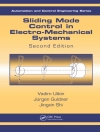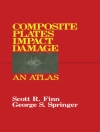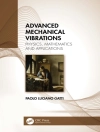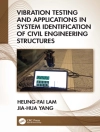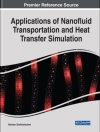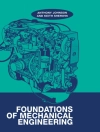This book systematically describes free-standing films and self-supporting nanoarrays growing on rigid and flexible substrates, and discusses the numerous applications in electronics, energy generation and storage in detail. The chapters present the various fabrication techniques used for growing self-supporting materials on flexible and rigid substrates, and free-standing films composed of semiconductors, inorganic, polymer and carbon hybrid materials.
Inhaltsverzeichnis
Introduction.- Metallic foams: Fabrication, Properties and Applications.- Carbon substrates: Fabrication, Properties and Applications.- Metal foils: Fabrication, Properties and Applications.- Glass substrates: Fabrication, Properties and Applications.- Ceramic substrates: Fabrication, Properties and Applications.- Textile-based self-supported materials: Fabrication, Properties and Applications.- Flexible substrates: Fabrication, Properties and Applications.- Self-standing nanoarchitectures.- Self-cleaning adsorbents: Fabrication, Properties and Applications.- Self-adhesive electrodes: Fabrication, Properties and Applications.- Free-standing films: Fabrication, Properties and Applications.- Self-standing membrane and its applications.- Surface-enhanced Raman scattering substrates: Fabrication, Properties and Applications.- Self-healing substrates: Fabrication, Properties and Applications.- Application of self-supported materials in solar-cells.- Application of self-supported electrocatalysts.- Application of self-supported electrodes in supercapacitors.- Self-supported materials for LEDs and photodetectors applications.- Self-supported materials for transistors.- Self-supported materials for non-volatile memory and spintronics.- Application of self-supported materials for photo and photoelectrocatalysis.- Self-supported materials for nanodevices.- Self-supported materials for milli-meter wave and wireless applications.- Self-supported materials for battery technology.- Self-supported materials for electrochromics.- Self-supported materials for fuel cells.- Self-supported materials for water treatment.- Self-supported materials for sensors.- Self-supported materials for wearable device applications.- State-of-the-Art advances and perspectives.
Über den Autor
Dr. Inamuddin is currently working as Assistant Professor in the Chemistry Department, Faculty of Science, King Abdulaziz University, Jeddah, Saudi Arabia. He is a permanent faculty member (Assistant Professor) at the Department of Applied Chemistry, Aligarh Muslim University, Aligarh, India. He obtained Master of Science degree in Organic Chemistry from Chaudhary Charan Singh (CCS) University, Meerut, India, in 2002. He received his Master of Philosophy and Doctor of Philosophy degrees in Applied Chemistry from Aligarh Muslim University (AMU), India, in 2004 and 2007, respectively. He has extensive research experience in multidisciplinary fields of Analytical Chemistry, Materials Chemistry, and Electrochemistry and, more specifically, Renewable Energy and Environment. He has worked on different research projects as project fellow and senior research fellow funded by University Grants Commission (UGC), Government of India, and Council of Scientific and Industrial Research (CSIR), Government of India. He has received Fast Track Young Scientist Award from the Department of Science and Technology, India, to work in the area of bending actuators and artificial muscles. He has completed four major research projects sanctioned by University Grant Commission, Department of Science and Technology, Council of Scientific and Industrial Research, and Council of Science and Technology, India. He has published 145 research articles in international journals of repute and eighteen book chapters in knowledge-based book editions published by renowned international publishers. He has published fifty-four edited books with Springer, United Kingdom, Elsevier, Nova Science Publishers, Inc. U.S.A., CRC Press Taylor & Francis Asia Pacific, Trans Tech Publications Ltd., Switzerland, Intech Open Limited, U.K. and Materials Science Forum LLC, U.S.A. He is the member of various journals editorial boards. He is also serving as Associate Editor for journals, Environmental Chemistry Letter, Applied Water Science and Euro-Mediterranean Journal for Environmental Integration, Springer-Nature; Frontiers Section Editor, Current Analytical Chemistry, Bentham Science Publishers, Editorial Board Member, Scientific Reports-Nature, Editor, Eurasian Journal of Analytical Chemistry and Review Editor, Frontiers in Chemistry, Frontiers, U.K. He is also guest editing various special thematic special issues to the journals of Elsevier, Bentham Science Publishers and John Wiley & Sons, Inc. He has attended as well as chaired sessions in various international and national conferences. He has worked as a Postdoctoral Fellow, leading a research team at the Creative Research Initiative Center for Bio-Artificial Muscle, Hanyang University, South Korea, in the field of renewable energy, especially biofuel cells. He has also worked as a Postdoctoral Fellow at the Center of Research Excellence in Renewable Energy, King Fahd University of Petroleum and Minerals, Saudi Arabia, in the field ofpolymer electrolyte membrane fuel cells and computational fluid dynamics of
polymer electrolyte membrane fuel cells. He is a life member of the Journal of the Indian Chemical Society. His research interest includes ion exchange materials, a sensor for heavy metal ions, biofuel cells, supercapacitors and bending actuators.
Dr. Rajender Boddula is currently working as Chinese Academy of Sciences-President’s International Fellowship Initiative (CAS-PIFI) at National Center for Nanoscience and Technology (NCNST, Beijing). His academic honors include University Grants Commission National Fellowship and many merit scholarships, study-abroad fellowships from Australian Endeavour Research fellowship and CAS-PIFI. He has published many scientific articles in international peer-reviewed journals and has authored six book chapters, and also serving as editorial board member and referee for reputed international peer-reviewed journals. He has published edited books with Springer, United Kingdom, Elsevier, CRC Press Taylor & Francis Asia Pacific and Materials Science Forum LLC, U.S.A. His specialized areas of energy conversion and storage, which include nanomaterials, graphene, polymer composites, heterogeneous catalysis, photoelectrocatalytic water splitting, biofuel cell, and supercapacitors.
Prof. Abdullah M. Asiri is the Head of the Chemistry Department at King Abdulaziz University since October 2009 and he is the founder and the Director of the Center of Excellence for Advanced Materials Research (CEAMR) since 2010 till now. He is a Professor of Organic Photochemistry. He graduated from King Abdulaziz University (KAU) with a BSc in Chemistry in 1990 and a Ph D from University of Wales, College of Cardiff, UK in 1995. He was promoted to a Professor in 2004. His research interest covers color chemistry, synthesis of novel photochromic, thermochromic systems, synthesis of novel coloring matters and dyeingof textiles, Materials Chemistry, Nanochemistry and nanotechnology Polymers and plastics. Prof. Asiri is the principal supervisors of more than 20 Msc and six Ph D thesis; He is the main Author of ten books in different chemistry disciplines. Prof. Asiri is the Editor-in-Chief of King Abdulaziz University Journal of Science. A major achievement of Prof. Asiri is the discovery of tribochromic compounds, a class of compounds which change from slightly or colorless to deep colored when subjected to small pressure or when grind. This discovery was introduced to the scientific community as a new terminology Published by IUPAC in 2000. This discovery was awarded a patent from European Patent office and from UK patent and some other patents office in Europe. Prof. Asiri involved in many committees at the KAU level and also on the national level, he took a major roll in the Advanced materials committee working for KACST to identify the National plan for science and technology in2007. Prof. Asiri played a major role in advancing the chemistry education and research in KAU, he has been awarded the best Researchers from KAU for the past five years. He also awarded the Young Scientist award from the Saudi Chemical society in 2009, and also the first prize for the distinction in science from the Saudi chemical society in 2012. He also received a recognition certificate from the American Chemical society (Gulf region Chapter) for the advancement of chemical science in the Kingdome. Also he received a Scopus certificate for the most Publishing Scientist in Saudi Arabia in chemistry in 2008. He is also a member of the Editorial Board of Pigments and Resin Technology (UK), Organic Chemistry in Sight (New Zealand), Designed Monomers & Polymers and Journal of Single Molecule Research . He is the Vice- President of Saudi Chemical Society (Western Province Branch). He hold Four USA patents, more than 800 Publications in international Journals, Seven book Chapters, and 10 Books.


